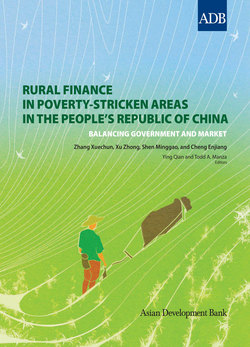Читать книгу Rural Finance in Poverty-Stricken Areas in the People's Republic of China - Xuechun Zhang - Страница 33
На сайте Литреса книга снята с продажи.
Rural Credit Cooperatives since 1996
ОглавлениеSince 1996, RCC reform has gone through three stages, with the first stage occurring between 1996 and 1998. Following the 1996 Decision on Rural Financial System Reform, the RCCs were separated from the ABC and began a transformation into cooperative financial institutions with farmers as shareholders and members as management. RCC reform in various regions of the country was implemented under the direction of the State Council, but the result was unsatisfying. RCCs were left with heavy historical burdens, poor asset quality, and high potential risks, and their services fell far short of the needs of rural economic development. Since 1997, the PBC has strengthened supervision and has closed over 10,000 RCCs. Nevertheless, RCCs still face many difficulties.
Stage two (1998–2000) comprised the commercialization and withdrawal of state-owned commercial banks from rural areas and the shutdown of rural cooperative foundations. The operations of the ADBC were confined to acquisition loans for crops, cotton, and oil. RCCs thus became the main force in rural finance.
In 1999, to increase rural households’ access to credit, the PBC began to provide loans to RCCs to encourage the issuance of microcredit through agriculture loans. The interest rate was 3.25%, 0.99 percentage points lower than the general PBC lending rate.4 Meanwhile, RCC reform was pushed ahead under the principles of voluntary share purchasing, democratic management, and member-oriented services, which proved to be beyond the RCCs’ capacity. The reform thus failed to achieve the expected results and instead magnified the conflict between the capabilities and the responsibilities of the rural credit cooperatives.
During the third stage (2000–2002), the Pilot on Organizational Systems of Rural Credit Cooperatives provided the legal basis for pilot RCC reform in Jiangsu Province. Jiangsu examined the possibilities of clarifying the equity rights of members, improving operational mechanisms, making township RCCs into branches of county RCCs, establishing rural commercial banks, and creating provincial rural credit unions to manage the RCCs. In addition, the microcredit pilot was implemented nationwide, expanding rural household microfinance to nearly CNY75 billion nationwide by December 2002.
RCCs were left with heavy historical burdens, poor asset quality, and high potential risks, and their services fell far short of the needs of rural economic development
During this stage, reform proceeded amid RCC restructuring. RCCs were gradually restructured into cooperatives owned and managed by farmers and providing services to members. RCCs, now separated from the ABC, were managed by county rural credit unions and regulated by the PBC.
